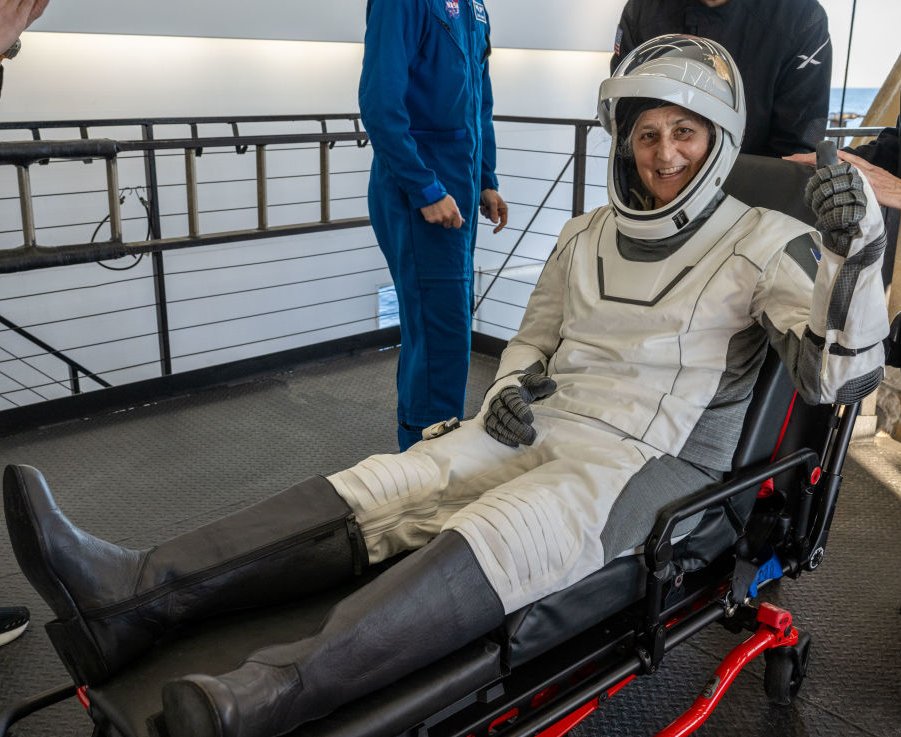NASA astronauts Barry “Butch” Wilmore and Sunita “Suni” Williams have returned to Earth after what was supposed to be an eight-day mission turned into nine months in space.

Their extended stay aboard the International Space Station (ISS) has taken a toll on their bodies, as seen in before-and-after images that highlight the physical effects of prolonged exposure to space.
As reported by BBC News, the two astronauts splashed down safely in the Gulf of Mexico on March 18 and were immediately stretchered away—a standard procedure for astronauts returning from long missions in microgravity.
In images from their arrival back on Earth, Wilmore and Williams appear thinner and visibly weaker than when they first launched in June 2024.
Before their departure, the pair were photographed looking fit and prepared for their expected short-term mission. Now, their post-mission images serve as a stark reminder of how space travel affects the human body.

Per the BBC, spending time away from Earth’s gravity causes significant physical changes:
Loss of muscle mass and bone density: For every month in space, astronauts lose about 1% of their bone density. After nine months, Wilmore and Williams have likely experienced considerable weakening in their bones and muscles.

Weakened cardiovascular system: Their hearts will have become weaker because they haven’t needed to work as hard to pump blood in microgravity.
Changes to vision: Spaceflight alters the shape of the eye, often leading to deteriorating eyesight for returning astronauts.

Fluid buildup in the head: Without gravity pulling fluids downward, astronauts often experience a “stuffy head” feeling, similar to having a cold.
Increased radiation exposure: While NASA scientists expect most DNA damage from cosmic radiation to repair itself within a few months, long-term exposure remains a major concern.
Adjusting Back to Life on Earth
Rehabilitation is now a crucial part of Wilmore and Williams’ recovery. They will undergo weeks of physical therapy to regain strength and mobility.
Though their extended stay fueled speculation and political controversy, NASA officials have repeatedly denied claims that the astronauts were “stranded” in space.

NASA Administrator Bill Nelson defended the decision to return the Starliner to Earth unmanned in September 2024, stating: “Spaceflight is risky, even at its safest and most routine. A test flight, by nature, is neither safe, nor routine.
“The decision to keep Butch and Suni aboard the International Space Station and bring Boeing’s Starliner home uncrewed is the result of our commitment to safety: our core value and our North Star.”
Despite these challenges, their extended mission provided valuable data on the long-term effects of space travel—information that will be essential for future missions to the Moon and Mars.
NASA will continue monitoring the astronauts’ recovery, but their return highlights both the incredible resilience of the human body and the challenges of deep-space exploration.


